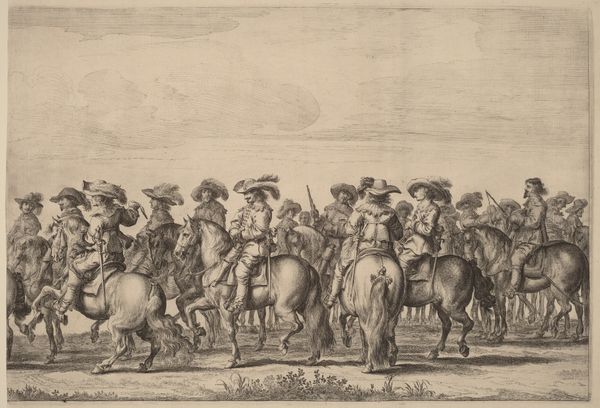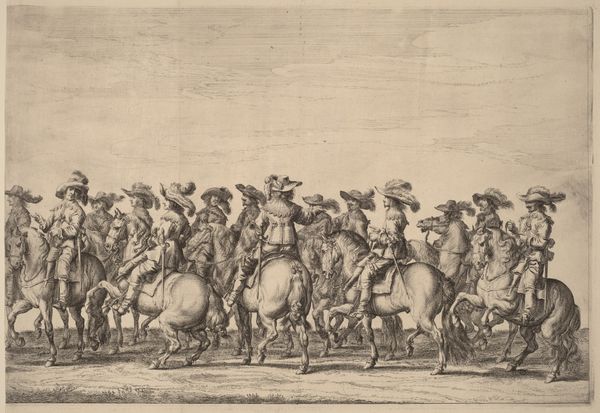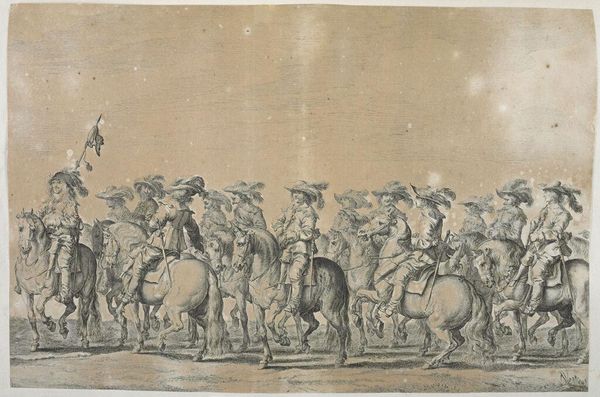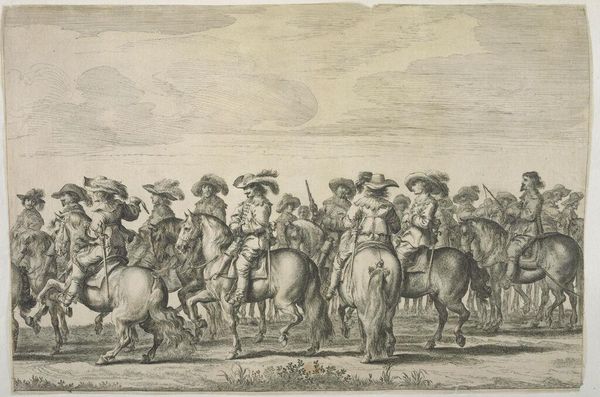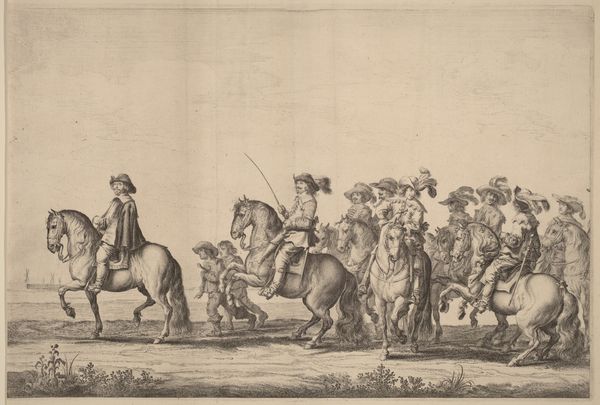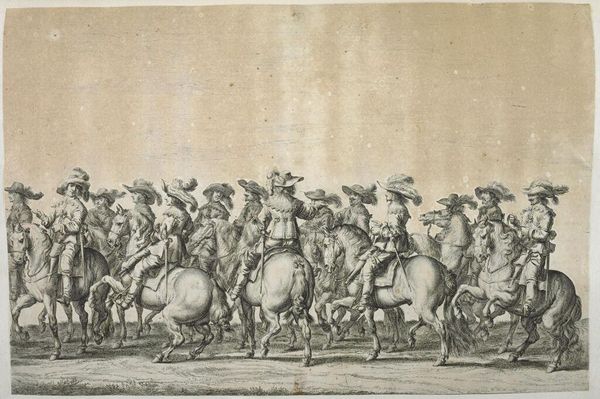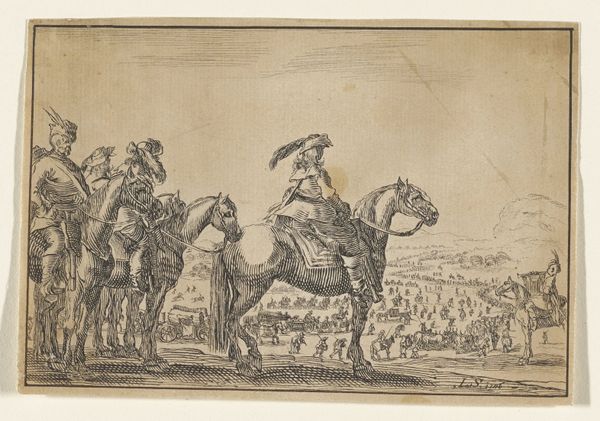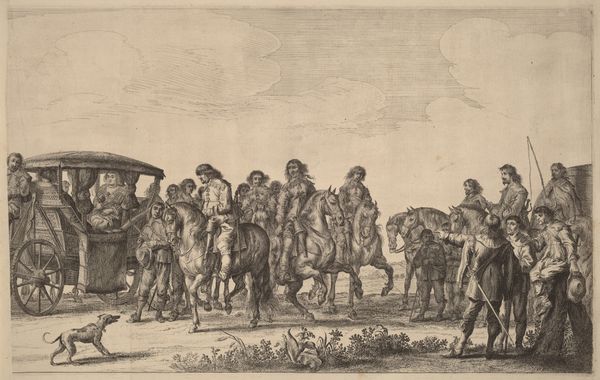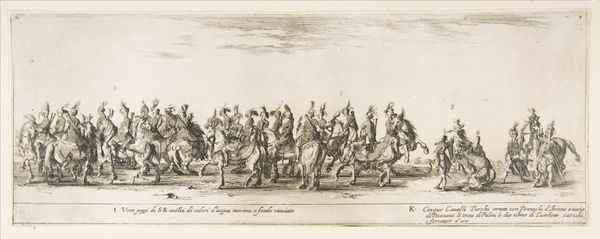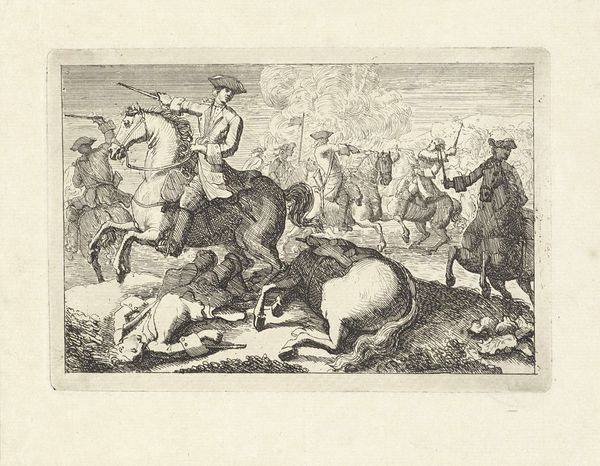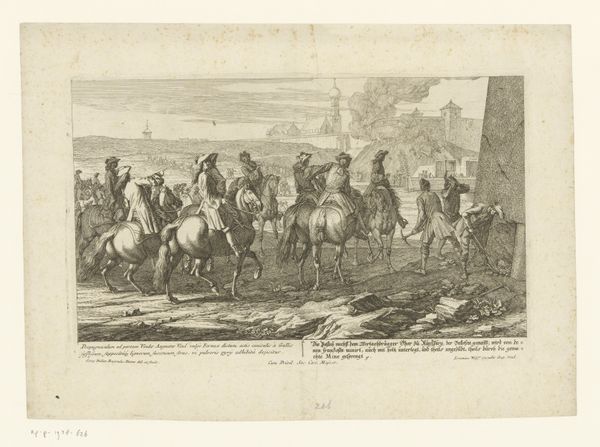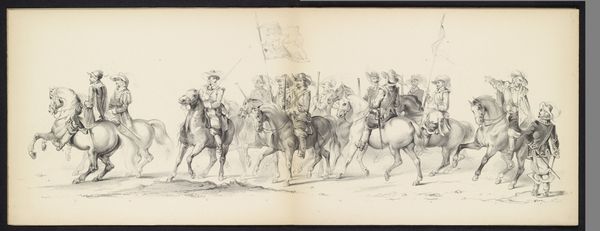![Entry of Marie de Medici into Amsterdam [plate 6 of 6] by Pieter Nolpe](/_next/image?url=https%3A%2F%2Fd2w8kbdekdi1gv.cloudfront.net%2FeyJidWNrZXQiOiAiYXJ0ZXJhLWltYWdlcy1idWNrZXQiLCAia2V5IjogImFydHdvcmtzL2RhMTc0MDVjLTExZjQtNDQ3My04NDVmLWNmMjM3NDY3ZWQwOC9kYTE3NDA1Yy0xMWY0LTQ0NzMtODQ1Zi1jZjIzNzQ2N2VkMDhfZnVsbC5qcGciLCAiZWRpdHMiOiB7InJlc2l6ZSI6IHsid2lkdGgiOiAxOTIwLCAiaGVpZ2h0IjogMTkyMCwgImZpdCI6ICJpbnNpZGUifX19&w=3840&q=75)
print, etching, engraving
#
baroque
# print
#
etching
#
genre-painting
#
history-painting
#
engraving
Copyright: National Gallery of Art: CC0 1.0
Curator: Ah, here we have Pieter Nolpe’s 1639 engraving and etching, “Entry of Marie de Medici into Amsterdam.” It's number six in a series. Editor: My first thought is a long, grey, elegant dream! Look at them all, those confident riders and their patient horses...almost floating. There’s something beautifully melancholic in that muted palette, too. Curator: Consider the labor behind its creation. This wasn't just a drawing. Each line was etched or engraved, requiring precision and planning, and it served to document and disseminate a particular political narrative to a wider audience. Editor: It is incredible detail! Almost obsessive. I get a sense that Nolpe felt he needed to capture *everything*, which adds to that dreamlike feeling—you know, that thing when you are recalling every single item and detail about a particular, very intense situation you are living. Do you feel it is Baroque? Curator: It certainly bears Baroque hallmarks – grandeur, movement, and that clear effort to impress the viewer. But within the printmaking context, we see a merging of those aesthetic values with a kind of reproductive technology designed for a broader consumption of political imagery. This print allows the event to be available as artifact. Editor: Artifact! It makes total sense when you phrase it that way. This helps me see that beyond my first dreamy vision, this image also reveals itself to be very, very serious; a tool to promote power. Also... just logistically! Engravings! To portray *this* scene! What a skill! It makes my head spin to think of such dedication! Curator: Exactly. Each impression struck from the plate contributes to the larger picture. Consider how the reception and distribution of this piece, not just its artistic qualities, cemented its influence and how it served a definite function. Editor: Mmm! Thinking about it that way pulls me completely into the moment. I feel as if I am there watching them. What about you? Does it bring you back to Amsterdam at all? Curator: I think I am most impressed with what that dedication was dedicated to. Nolpe’s piece stands as a reminder to consider art both as a material object and as a vehicle for reinforcing particular societal beliefs. It's not just the art itself; it's its role in the construction and circulation of power. Editor: True! I hadn’t considered that beyond just seeing the work itself! Thanks!
Comments
No comments
Be the first to comment and join the conversation on the ultimate creative platform.
